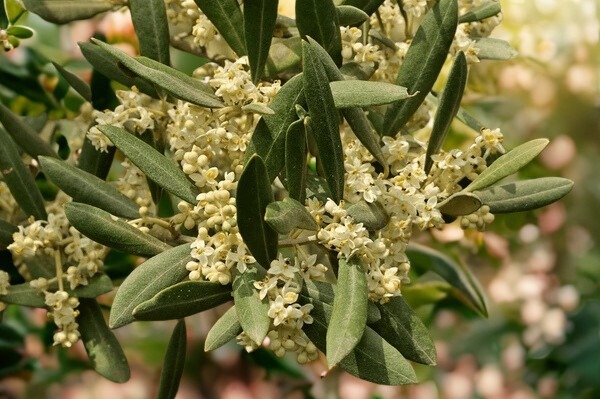| Nutrient | Typical Analysis (W/V) |
|---|---|
| Calcium (water soluble) | 32.00% |
| Nitrogen (as organic liquid) | 1.00% |
| Phosphorous (water soluble) | 0.25% |
| Potassium (organic) | 0.064% |
| Magnesium | 0.35% |
| Sulphur (organic) | 0.05% |
| Iron | 0.17% |
| Manganese | 0.02% |
| Zinc | 0.002% |
| Boron | 0.0012% |
| Iodine | 0.001% |
| Silica | 0.45% |
| Rare Earth Minerals | 0.005% |
| Fulvates (organic) | 0.10% |
| Humates | 0.01% |
| Alginates | 0.05% |
| Vitamin B1 | 0.05% |
| Sugars (micro-feed) | 0.20% |
| Kelp Extracts | 0.40% |
| Filtration | Final filtered to 50 microns |
| Component | Percentage (W/V) |
|---|---|
| Calcium (water soluble) | 32% |
| Nitrogen (organic liquid) | 1% |
| Phosphorous (water soluble) | 0.25% |
| Potassium (organic) | 0.064% |
| Magnesium | 0.35% |
| Silica | 0.45% |
| Iron | 0.17% |
| Sea Minerals & Kelp Extracts | 0.4% |
| Humates / Fulvates / Alginates | 0.16% combined |
| File | Title | File Description | Type | Section |
|---|---|---|---|---|
| MSDS-Ganixx-Bio-Liquid-CAL.pdf | Bio Calcium by Organica Australia | Safety Data Sheet | Specifications | Document |

At the 5th International Conference on Sustainable Agriculture and Biosystems, researchers in Iran presented findings on why fruit and flower drop occurs in fruit trees and what growers can do to reduce losses. Drawing on their work, we explore the phenomenon of fruit and flower drop, the underlying causes, and practical remedies for orchard managers.
Fruit trees contribute significantly to agricultural economies across the world. Their production supports farm income, provides employment for skilled horticulturists, and underpins industries ranging from fresh produce to processing and food manufacturing. Cultivation involves a complex mix of practices: careful irrigation management, balanced fertilisation, pruning, pest control, and the application of modern technologies. Beyond economics, fruit trees are valued for their nutritional contributions, supplying sugars, oils, proteins, vitamins, and essential minerals through both fresh consumption and processed goods.
Fruit and flower drop is a natural occurrence in many tree species. Its extent varies according to cultivar, climate, soil type, and orchard practices. In some cases, drop is beneficial, helping the tree regulate excessive fruit load through “natural thinning.” But when drop is excessive or occurs at the wrong stage, it becomes detrimental, reducing yields and profitability.
Researchers typically divide drop into three categories:
Environmental Factors
The underlying mechanism of drop is closely linked to plant hormones. As fruits grow, the concentration of auxins (growth-promoting hormones) declines, while ethylene levels rise. This shift lowers the fruit detachment force (FDF), weakening the connection between fruit and tree. The abscission zone (the separation layer) becomes increasingly sensitive to ethylene, causing fruit drop. Environmental conditions such as temperature and humidity interact with these hormonal signals to intensify drop.
Growers can apply several strategies to reduce drop and improve fruit set:
While some degree of fruit and flower drop is unavoidable, excessive losses can usually be mitigated through careful orchard management. Attention to fertilisation, irrigation, pest control, and pollination provides the best defence against unnecessary drop.
Al-Dulaimy, A.F.Z., Alalaf, A.H., Al-Hayali, R.E.Y., & ALTaey, D.K.A. (2023). Flowers and Fruits Drop in Fruit Trees … Causes and Solutions: A review. Practical Advice
Presented at the 5th International Conference for Agricultural and Environment Sciences. IOP Conf. Ser.: Earth Environ. Sci. 1158 042010. Read Full Article
Photo credit: “Landscape view of the flowers of an olive tree (Olea europaea)” by Zsolyomi, available on Shutterstock (Asset ID: 2470400251). Licensed via Shutterstock Royalty-Free License.
In the lead up to flowering, you need to ensure your trees have adequate nutrition, particularly of Boron and Calcium. ?A lack of Boron?and Calcium may lead to decreased fruit set, oil quality and oil stability.
The application of Boron?and?Calcium?can never be overstressed. ?It is a requirement for your trees.
In Brief
A study on olive trees has looked at different application rates of Boron and Calcium and the effects on fruit set, fruit oil and oil chemical characteristics.
The rate of 100ppm of Boron?and 2% Calcium?was applied at full bloom and the 2nd application at 15 days later. Trees were sprayed with nutrient solution till run off.
Fruit Set %
Trees in this study showed a higher fruit set. ?Results also confirm the role of Boron?and?Calcium?nutrients in improving fruit set of olive flowers.
From the overall data, the two studied nutrients effectively increased fertilisation either through controlling pollen germination on the stigma or growth of pollen tube through the style. ?Therefore, the subsequent increase in fruit set % was observed.
Fruit oil %
Furthermore, the effects could also be seen in increased fruit oil content. ?This increase reached a significant level in most cases.
Oil Chemical Characteristics
Peroxide Value
The study of the application of Boron?and?Calcium?at the same rate noted above greatly decreased the peroxide value in the cultivars studied.
If you would like to read the full paper, please?Press to view article
http://youtu.be/fkFD1Osg4Y4